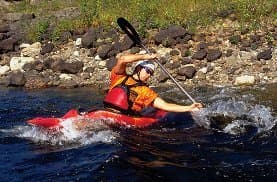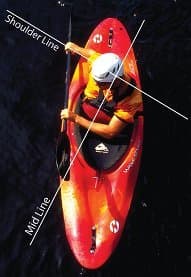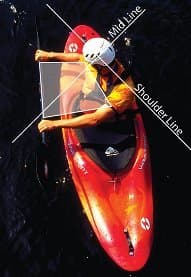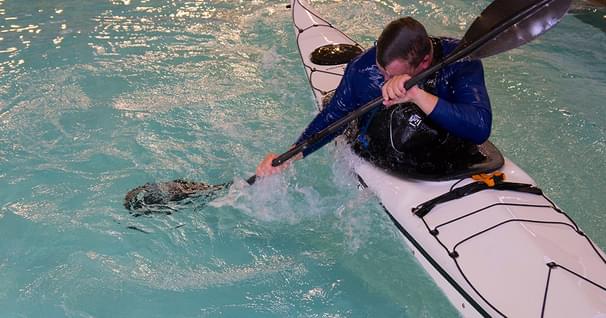Preventing Shoulder Injury
-

Photo courtesy Mike Srone
Photo courtesy Mike Srone
The shoulder dislocation is to kayaking, what a blown ACL is to skiing. Why is this injury so dreaded? The pain factor doesn't seem to drive the fear into our hearts; it's the thought of having to go through surgery, the thought of sitting idle through months of therapy, the thought that the shoulder will never be as strong as it was. Unfortunately these are substantiated concerns as a shoulder dislocation is often accompanied by damage in the joint that requires real care, and sometimes surgery to heal. So we're going to look at how to keep your shoulders safe.
It goes without saying that having well-conditioned muscles around the shoulder will go a long way to keeping the joint in place. It should be noted that paddlers often have much stronger back shoulder muscles than front, as these are the muscles used primarily for forward paddling. Seeing as the majority of shoulders dislocate forwards, it should make sense that the front muscles be equally as strong as the back. This is where back paddling practice comes in. But even with Superman's shoulders a dislocation can easily happen, though there are a few simple rules that, when followed, will go a long way towards keeping your arms protected:
- Don't overextend your arms.
- Maintain a 'power position' with your arms.
Let's look at both of these in more detail below.
1. Don't overextend your arms
The idea of not overextending your arms is a simple concept to appreciate, but it isn't always so simple to apply. When you're getting tossed around in whitewater, the desire to keep your head above the water can easily over-ride any safe paddling practices. Try staying as relaxed as possible, and fight the urge to use massive 'Geronimo' braces.

50 years of lightweight, maneuverable, high-performing kayaks.
Check out this interview with Tom Keane, Eddyline Kayaks Co-Owner, on their journey!
2. Maintain a 'power position' with your arms
So what is the 'power position'? When looking at your body from above, let's consider an invisible line that passes through both shoulders. We'll refer to this as the 'shoulder line'. Now consider another line that divides your body into two equal halves. We'll call this the 'mid line'.
The power position simply involves keeping your hands in front of your shoulder line and preventing your hands from crossing your mid line. In so doing, you will maintain a rectangle with your arms, paddle and chest. With this rectangle formed, you get the most power from your paddle and your shoulders stay in the safest position. When your hands move behind your shoulder line your arm is in a very vulnerable position.
Does this mean that you can't safely reach to the back of your kayak? Not at all! But what it does mean is that in order to reach to the back of your kayak you'll need to rotate your whole torso so that your arms stay in the power position. This act of rotating your whole torso is fittingly named 'torso rotation'. Torso Rotation is not only responsible for keeping your shoulders safe, but it is a key concept for getting the most power from your strokes.

Poor Torso Rotation: the rear hand falls behind the shoulder line and the front hand crosses the mid-line.

The Power Position: The whole upper body turns so that the hands stay in front of the shoulder line, neither cross the mid-line, and the arms, paddle and chest form a rectangle.
Hopefully these couple of rules will not only help prevent shoulder injury, but also help alleviate any concerns you have before going out paddling. Practice up, wear a life jacket, and be safe!
Related Articles
By changing how you edge and balance your boat you can increase your stability and adaptability. Using…
Mention “pool session” and the first image that pops into most kayakers minds is a class in how to roll.…
Photo Credit: Darlene Patterson Many people who have paddled for years can't keep a canoe on a straight…
Eddy turns are the foundation for paddling in current, enabling you to enter and exit river and tidal…





